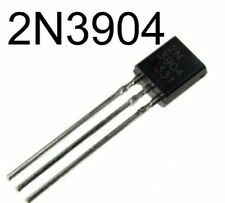
The vast majority of wannabe planets in the universe are likely destroyed by cosmic forces long before they have a chance to evolve from dusty disks circling their parent stars, according to University of Colorado at Boulder researchers.
Observations with the Hubble Space Telescope have shown that prolific planet- forming environments like the nearby Orion Nebula are fraught with peril, said CU-Boulder Professor John Bally. Orion, a giant stellar nursery thought to have spawned roughly 20,000 low-mass stars like the sun in the last 10 million years, also harbors a handful of massive type O and B stars that emit blowtorch-like radiation, destroying most pre-planetary disks in their vicinity.
Astronomers estimate only about 10 percent of young stars are born in environments shielded from such radiation, said Bally of CU-Boulder’s astrophysical and planetary sciences department. “Most stars appear to form in rich clusters in Orion-like environments where their planet-forming disks are eroded by the intense light.”
To further complicate matters, nearly 90 percent of all young stars are thought to have companion siblings at birth as part of binary or multiple star systems, he said.
CU-Boulder Senior Research Associate Bo Reipurth of the APS department, who collaborates with Bally on several star formation projects, said such systems can contain one, two or three companion stars to the primary star, much like human twins, triplets and quadruplets. Even in the Orion Nebula, which has a star density about 1 million times that of so-called “field stars” like our sun, an estimated 60 percent of the young stars belong to binary or multiple star systems.
Every 10,000 years or so when binary stars become very close to each other, their circumstellar disk material is shaken up, triggering the accretion of more material and the production of gaseous jets by one of the stars, said Reipurth.
“Young stars, once thought to evolve slowly and steadily toward maturity, apparently suffer occasional catastrophes caused by nearby sibling stars,” said Reipurth.
“There is a popular misconception that most stars have planets, and that solar systems abound in the universe,” said Bally. “The reality seems to be that Earth’s solar system is a special place, and that we are lucky to be here.”
The massive stars scattered throughout Orion-like star-forming systems not only destroy most circumstellar disks before they have a chance to evolve into rocky planets, but also strip hydrogen and helium from the system needed to form large gaseous planets, said Bally. “This implies our solar system may have formed far away from massive stars,” said Bally. “Planetary systems like ours may be relatively rare.”
To date, astronomers have found more than 60 giant planets around about 50 stars, he said. But these numbers indicate that fewer than 5 percent of the stars surveyed are orbited by giant planets.
Jupiter, the largest planet in our solar system, is thought to shield Earth from comets and asteroids by sweeping them away with its massive gravity. Such giant planets may be a prerequisite for the existence of safe planetary environments suitable for the evolution of life, said Bally.
The successful formation of large, gaseous planets remains a mystery, he said. “In order for giant planets to form in Orion-like regions, they must be assembled promptly by gravity,” Bally said. “Such planets must accrete hydrogen and helium from their surroundings before the gases are removed.”
This process must be completed in less than a few hundred thousand years in order to avoid the blowtorch destruction of pre-planetary matter by massive nearby stars, he said. The bottom line is that we are finding a number of formidable constraints to building planets and planetary systems in the universe,” Bally said.


















Comments are closed.